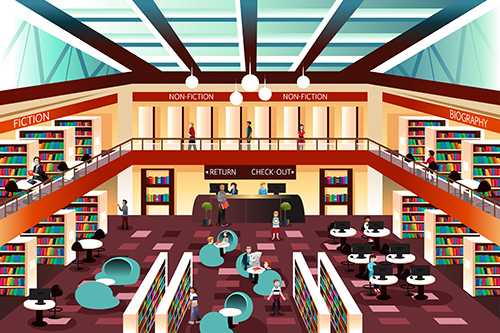Modern librarians can take charge in making their schools Future Ready
Ed note: This is the first in a series of columns from digital library expert Mark Ray discussing the changing role of librarians and the Future Ready Schools initiative.
 During the past year, more than 1900 superintendents have signed the Future Ready Pledge, part of a broadly-defined initiative to promote digital transformation in American schools. Superintendents across the nation are signing on the dotted line with a commitment to promote and support digital ways of teaching, learning, and leading. As the Future Ready Schools project enters its second year, districts are seeking to operationalize innovation from the classroom to the central office.
During the past year, more than 1900 superintendents have signed the Future Ready Pledge, part of a broadly-defined initiative to promote digital transformation in American schools. Superintendents across the nation are signing on the dotted line with a commitment to promote and support digital ways of teaching, learning, and leading. As the Future Ready Schools project enters its second year, districts are seeking to operationalize innovation from the classroom to the central office.
My district, Vancouver Public Schools in WA, is among a growing number of districts that have identified teacher librarians as partners to provide the necessary leadership to help schools make future readiness more than just a promise.
Working collaboratively with other Future Ready districts—including Lincoln, NE, Washington D.C., and Mooresville Graded School District in N.C.—Vancouver has been part of a national team sponsored by the Follett Project Connect advocacy initiative. A team of district library leaders has developed a simple framework which builds on the Future Ready Schools initiative to identify what makes for a Future Ready library. This framework is based on a simple question: What do students (and teachers) need to be future ready?
Next page: How librarians are leading the charge
This can be an exhaustive, and often complex, question, but the framework focuses on key areas.
• Educational leadership
• Professional development
• Instructional partnership
• Digital citizenship and leadership
• Curriculum and technology integration
• Information literacy
• Content access and curation
• Reading and literacy advocacy
• Making and building
• Equitable access
Educators would likely recognize these targets as essential components of 21st century schools. But for districts seeking to be Future Ready, the challenge is addressing these needs in the face of inundated classroom teachers and constraints on funding, capacity, and support.
The Future Ready Libraries Initiative offers districts ways to leverage librarians to simultaneously support students and teachers while redefining and strengthening library programs. The targets identified in the Future Ready Libraries Framework are ones which librarians are well-positioned to help lead, teach, and support students and teachers. In many cases, they are simply extensions of what librarians have been aspiring to do for years, albeit with a digital or future ready twist.
So how do future ready libraries step up and take an active role in shaping 21st century schools? Take content curation for example. On Oct. 29, the Department of Education announced #GoOpen, a new open educational resources initiative. According to the DoE, the campaign encourages broader use of openly licensed educational materials—so-called OER. While the concept is nothing new, this effort is a reminder that there is no such thing as a free lesson. Schools are still seeking effective ways to harness, curate, categorize, tag and deploy digital educational resources. Yet hiding in plain sight are information specialists in the school library.
Librarians are already in the business of bringing order to information, resources, and materials for the benefit of students and teachers. The school library collection is specifically designed to support and complement classroom instruction. Could librarians who already collect, classify, manage, organize and promote library and textbook collections help schools and districts translate the promise of OER into reality? Dewey Decimal jokes aside, librarians deeply understand organization, copyright, and curation. Unlike most educators, they have training and experience in information management.
Over the next few articles of this series, we will dig deeper into curation and other challenges faced by future ready schools seeking to answer two questions—in what specific ways could librarians and library programs help? And what might future ready librarians and library programs look like? For districts with librarians, this may foster a re-imagination of the librarian’s role and the functions of the library, potentially informing librarian preparation, job descriptions, program design, evaluation, instruction, and professional development. For those schools without librarians, the framework may help guide priorities for professional development or the work of other instructional leaders.
Fortunately for Vancouver and other districts across the country, librarians are already very much part of the conversation, which could make our digital future that much easier.
Mark Ray is director of instructional technology and library services for Vancouver Public Schools in Washington and a member of Project Connect’s Library Leadership Committee.
- TC- What student choice and agency actually looks like - November 15, 2016
- What student choice and agency actually looks like - November 14, 2016
- App of the Week: Science sensor meets your smartphone - November 14, 2016


Comments are closed.